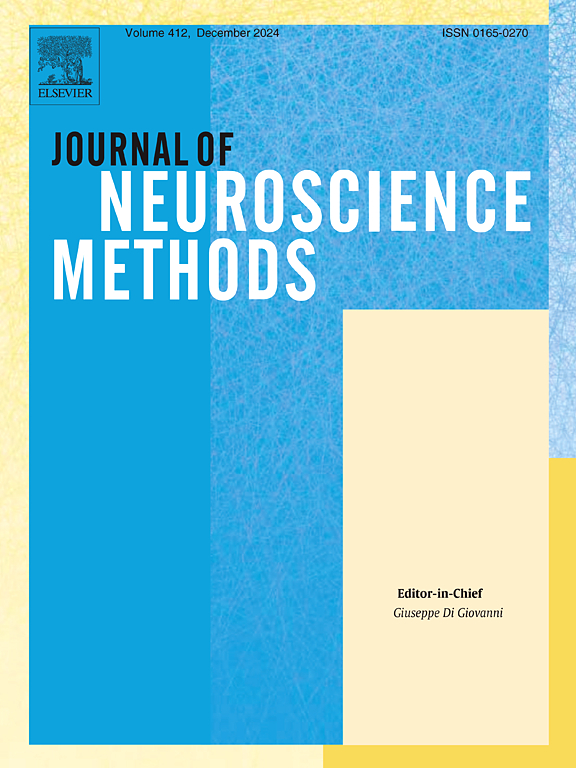脑纵向结构MRI对准刚体配准算法的比较研究
IF 2.3
4区 医学
Q2 BIOCHEMICAL RESEARCH METHODS
引用次数: 0
摘要
纵向结构MRI (sMRI)可用于描述脑形态随时间的变化。纵向sMRI的一个关键要求是精确的刚体对准。为此,我们开发了自动时序配准算法(ATRA)。ATRA是一种基于里程碑的方法,能够同时注册几十个sMRI。与现有方法的比较本研究的目的是评估ATRA与FSL、FreeSurfer和ANTS的准确性和反向一致性。如果没有基本真理,就只能确定算法之间的差异程度。我们提出,如果差异超过一定的阈值,可以直观地确定算法的相对准确性。我们计算了ATRA与其他三种方法对150对纵向sMRI的校准之间的差异。结果在偏差大于0.5 mm的情况下,我们直观地评价了对齐的准确性,而评分者对配准方法不可知。在这些情况下,ATRA在48例中有46例比FSL更准确(p <; .0001),在7例中有6例比FreeSurfer更准确(p = .0625),在所有6例中比ANTS更准确(p <; .05)。与所有其他方法相比,ATRA的逆一致性也明显更高。FreeSurfer的反向一致性优于FSL和ANTS,而ANTS优于FSL (p <; )。0001(所有6个两两比较)。结论与常用的几种刚体对齐方法相比,ATRA除了能够进行无偏群体智能配准外,还是最准确的算法。本文章由计算机程序翻译,如有差异,请以英文原文为准。
A comparative study of rigid-body registration algorithms for the alignment of longitudinal structural MRI of the brain
Background
Longitudinal structural MRI (sMRI) may be used to characterize brain morphological changes over time. A key requirement is accurate rigid-body alignment of longitudinal sMRI.
New method
We have developed the automatic temporal registration algorithm (ATRA) for this purpose. ATRA is a landmark-based approach capable of registering dozens of sMRI simultaneously.
Comparison with existing methods
The aim of this research was to evaluate the accuracy and inverse-consistency of ATRA in comparison to FSL, FreeSurfer, and ANTS. Absent a ground truth, it is only possible to determine the degree of discrepancy between algorithms. We propose that if the discrepancy exceeds a certain threshold, the relative accuracy of algorithms could be determined visually. We computed the discrepancy between ATRA and each of the other three methods for the alignment of 150 pairs of longitudinal sMRI.
Results
We visually rated the accuracy of alignments in cases where the discrepancy was greater than .5 mm while the rater was agnostic to the registration method. In those instances, ATRA was considered more accurate than FSL in 46 out of 48 cases (p < .0001), more accurate than FreeSurfer in 6 out of 7 cases (p = .0625), and more accurate than ANTS in all 6 cases (p < .05). ATRA was also significantly more inverse-consistent than all other methods. FreeSurfer was more inverse-consistent than FSL and ANTS, while ANTS outperformed FSL (p < .0001 for all 6 pairwise comparisons).
Conclusions
In addition to being capable of performing unbiased group-wise registration, ATRA is the most accurate algorithm in comparison to several commonly used rigid-body alignment methods.
求助全文
通过发布文献求助,成功后即可免费获取论文全文。
去求助
来源期刊

Journal of Neuroscience Methods
医学-神经科学
CiteScore
7.10
自引率
3.30%
发文量
226
审稿时长
52 days
期刊介绍:
The Journal of Neuroscience Methods publishes papers that describe new methods that are specifically for neuroscience research conducted in invertebrates, vertebrates or in man. Major methodological improvements or important refinements of established neuroscience methods are also considered for publication. The Journal''s Scope includes all aspects of contemporary neuroscience research, including anatomical, behavioural, biochemical, cellular, computational, molecular, invasive and non-invasive imaging, optogenetic, and physiological research investigations.
 求助内容:
求助内容: 应助结果提醒方式:
应助结果提醒方式:


